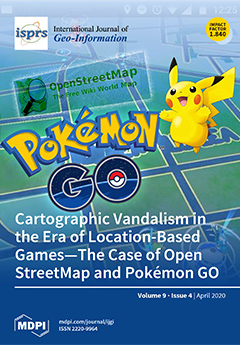Gully erosion is one of the main processes of soil degradation, representing 50%–90% of total erosion at basin scales. Thus, its precise characterization has received growing attention in recent years. Geomatics techniques, mainly photogrammetry and LiDAR, can support the quantitative analysis of gully
[...] Read more.
Gully erosion is one of the main processes of soil degradation, representing 50%–90% of total erosion at basin scales. Thus, its precise characterization has received growing attention in recent years. Geomatics techniques, mainly photogrammetry and LiDAR, can support the quantitative analysis of gully development. This paper deals with the application of these techniques using aerial photographs and airborne LiDAR data available from public database servers to identify and quantify gully erosion through a long period (1980–2016) in an area of 7.5 km
2 in olive groves. Several historical flights (1980, 1996, 2001, 2005, 2009, 2011, 2013 and 2016) were aligned in a common coordinate reference system with the LiDAR point cloud, and then, digital surface models (DSMs) and orthophotographs were obtained. Next, the analysis of the DSM of differences (DoDs) allowed the identification of gullies, the calculation of the affected areas as well as the estimation of height differences and volumes between models. These analyses result in an average depletion of 0.50 m and volume loss of 85000 m
3 in the gully area, with some periods (2009–2011 and 2011–2013) showing rates of 10,000–20,000 m
3/year (20–40 t/ha*year). The manual edition of DSMs in order to obtain digital elevation models (DTMs) in a detailed sector has facilitated an analysis of the influence of this operation on the erosion calculations, finding that it is not significant except in gully areas with a very steep shape.
Full article





